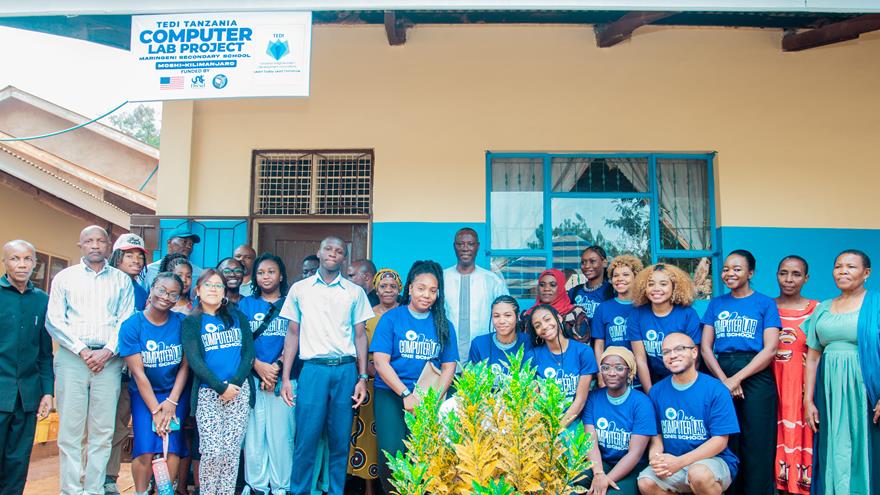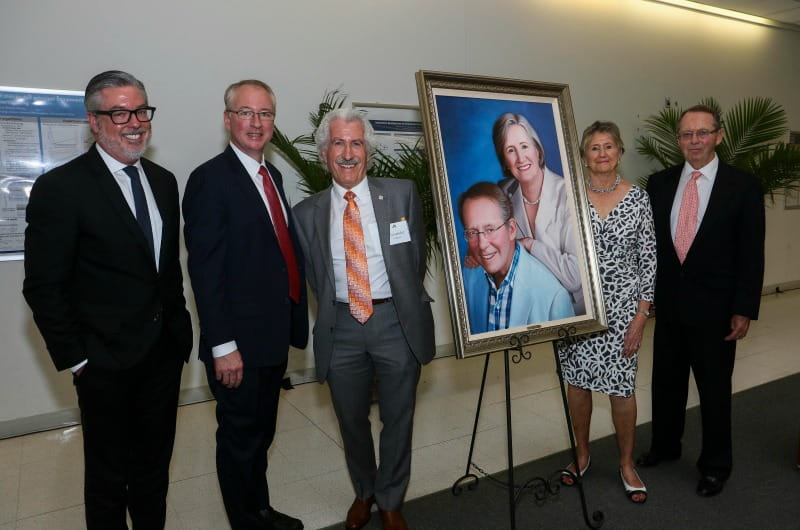A. J. Drexel Plasma Institute Renamed the C. & J. Nyheim Plasma Institute

- Through Connections and Community, Drexel Course Helps Launch Computer Lab in Tanzania
- Drexel's Self-Heating Concrete Is One Step Closer to Clearing Sidewalks Without Shoveling or Salting
- Pinging Pipes Could Help to Identify Lead Water Lines Without Excavation
- 40 Years Ago, Drexel Made Computer — and Apple — History

Drexel University’s A.J. Drexel Plasma Institute was renamed the C. & J. Nyheim Plasma Institute in honor of a generous donation of John and Christel Nyheim, longtime Drexel supporters with a passion for science and discovery. The name change was made official in a June 6 ceremony.
John and Christel Nyheim have a long history of promoting pioneering plasma research at Drexel. In 2002, they endowed the John A. Nyheim Chair Professor position in the College of Engineering, which has since been held by Alexander Fridman, PhD, director of the C. & J. Plasma Institute. Now, 14 years later, the Nyheims once again have created new opportunities for the field both at Drexel and on a global scale.
“I’m so proud we’re honoring what John and Christel have done for our University by naming the C. & J. Nyheim Plasma Institute,” said President John A. Fry at the naming ceremony. “Their generous philanthropy and passionate advocacy have fueled and elevated more than a decade of breakthroughs by Drexel innovators. Their wonderful gift to name the plasma institute will ensure that this center of excellence continues to grow in strength and impact in the years to come.”
Since the institute was founded in 2002 at Drexel, faculty and students from across the University have collaborated to advance our knowledge and understanding of plasma. Plasma is the fourth and most energetic state of matter, where atoms and molecules are transformed, at least partially, into freely moving charged particles like electrons and ions. Generation and stabilization of plasmas in the laboratory and in industrial devices is not easy, but Drexel researchers develop and apply plasma-based solutions in areas such as energy, medicine, bioengineering and environmental remediation.
The institute works with and receives millions of dollars in funding from governmental agencies such as USDA, NASA, NSF, the Department of Defense and the Department of Energy, to research the use of plasma to improve energy systems, electronics and more.
“The research conducted at the C. & J. Nyheim Plasma Institute has already made its mark on history,” said Joe Hughes, PhD, dean of the College of Engineering and Distinguished University Professor. “As we look to the future of the institute, we can be assured that it will continue to offer opportunities for faculty and student research, while making significant contributions to society in the fields of medicine, energy and the environment.”
Drexel is recognized as the birthplace of a novel and extremely promising branch of biomedical engineering known as plasma medicine. Started by a collaboration of scientists, engineers and medical doctors at the institute in 2003, plasma medicine has since expanded to multiple academic institutes throughout the world. The institute’s Plasma Medicine Laboratory studies the role of plasma in uses including wound healing, tissue repair and regeneration, stimulation of cells of the immune system and treatment of cancers, among many applications to human health. Already, the relatively new field of plasma medicine has helped improve the quality of life for several thousand patients around the world.
“We are proud to say that in the same year in which we became the C. & J. Nyheim Plasma Institute, we have treated seven cancer patients with successful plasma treatments,” said Fridman, who joined Drexel in 2002 to head the institute.
The support and encouragement of John and Christel Nyheim were instrumental in the success of the institute’s first 14 years. John is a trustee emeritus who served for nearly 25 years on Drexel’s Board of Trustees and also served as trustee of the Academy of Natural Sciences of Drexel University. During his tenure as chair of Drexel’s Investment Committee, the University’s endowment increased by 250 percent. Like John, Christel also has a passion for science and discovery, which she pursued in a career in cancer and industrial medicine research.
In This Article
Drexel News is produced by
University Marketing and Communications.
